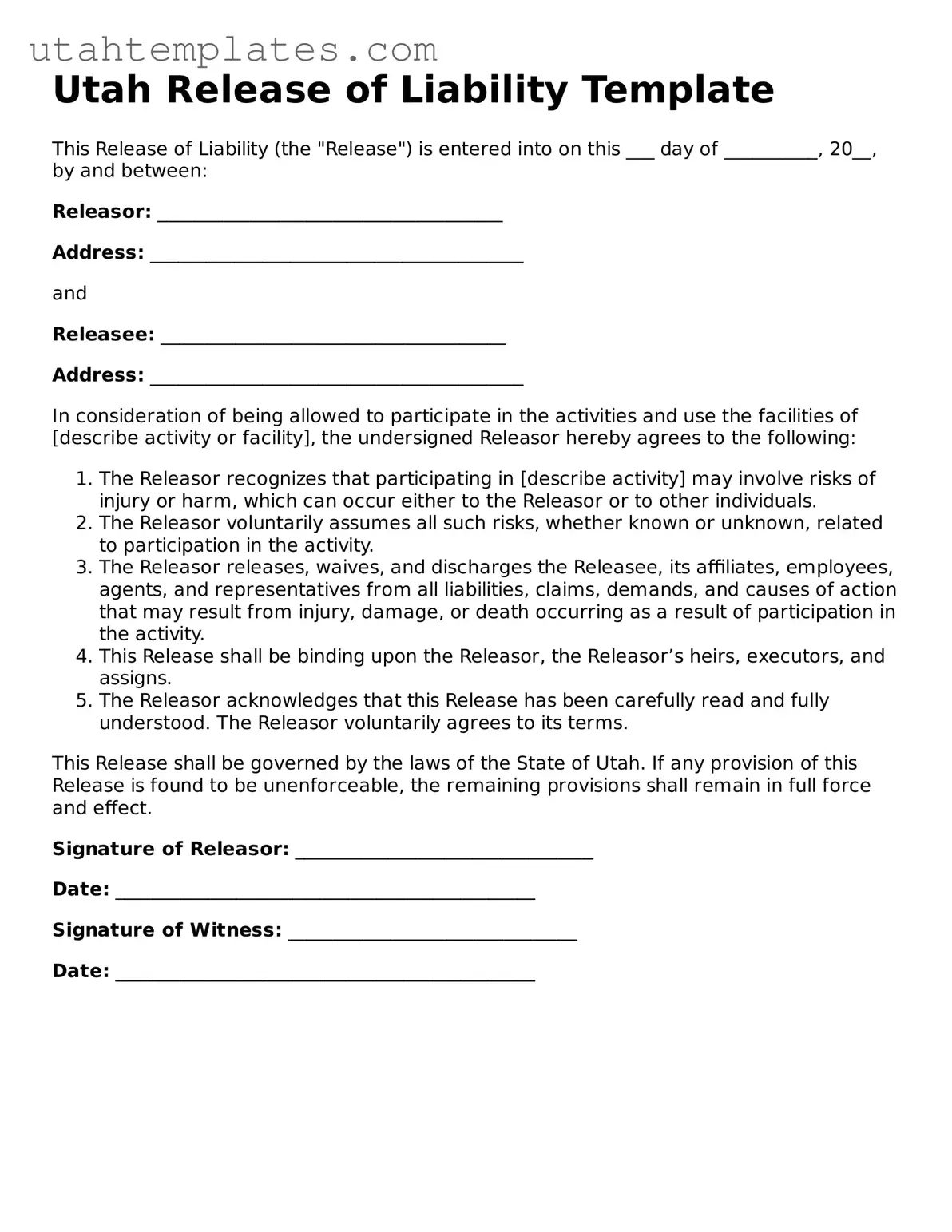Utah Release of Liability Template
This Release of Liability (the "Release") is entered into on this ___ day of __________, 20__, by and between:
Releasor: _____________________________________
Address: ________________________________________
and
Releasee: _____________________________________
Address: ________________________________________
In consideration of being allowed to participate in the activities and use the facilities of [describe activity or facility], the undersigned Releasor hereby agrees to the following:
- The Releasor recognizes that participating in [describe activity] may involve risks of injury or harm, which can occur either to the Releasor or to other individuals.
- The Releasor voluntarily assumes all such risks, whether known or unknown, related to participation in the activity.
- The Releasor releases, waives, and discharges the Releasee, its affiliates, employees, agents, and representatives from all liabilities, claims, demands, and causes of action that may result from injury, damage, or death occurring as a result of participation in the activity.
- This Release shall be binding upon the Releasor, the Releasor’s heirs, executors, and assigns.
- The Releasor acknowledges that this Release has been carefully read and fully understood. The Releasor voluntarily agrees to its terms.
This Release shall be governed by the laws of the State of Utah. If any provision of this Release is found to be unenforceable, the remaining provisions shall remain in full force and effect.
Signature of Releasor: ________________________________
Date: _____________________________________________
Signature of Witness: _______________________________
Date: _____________________________________________
